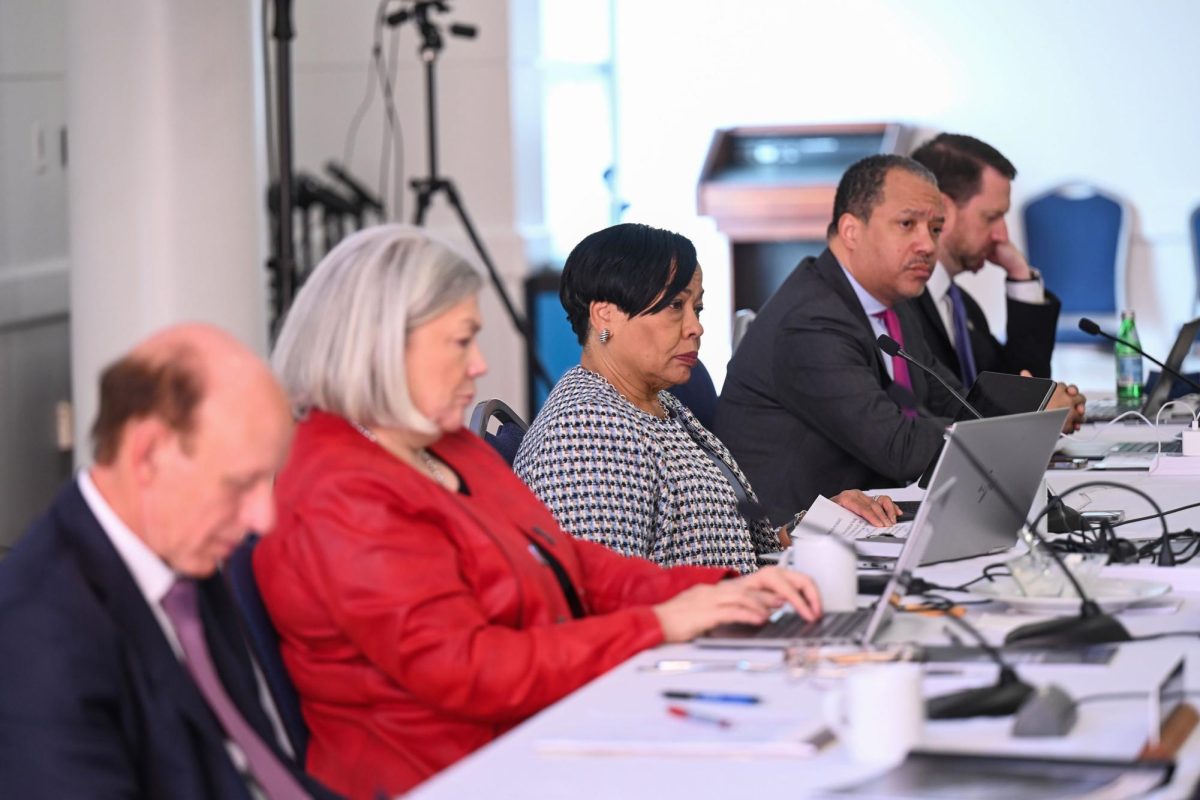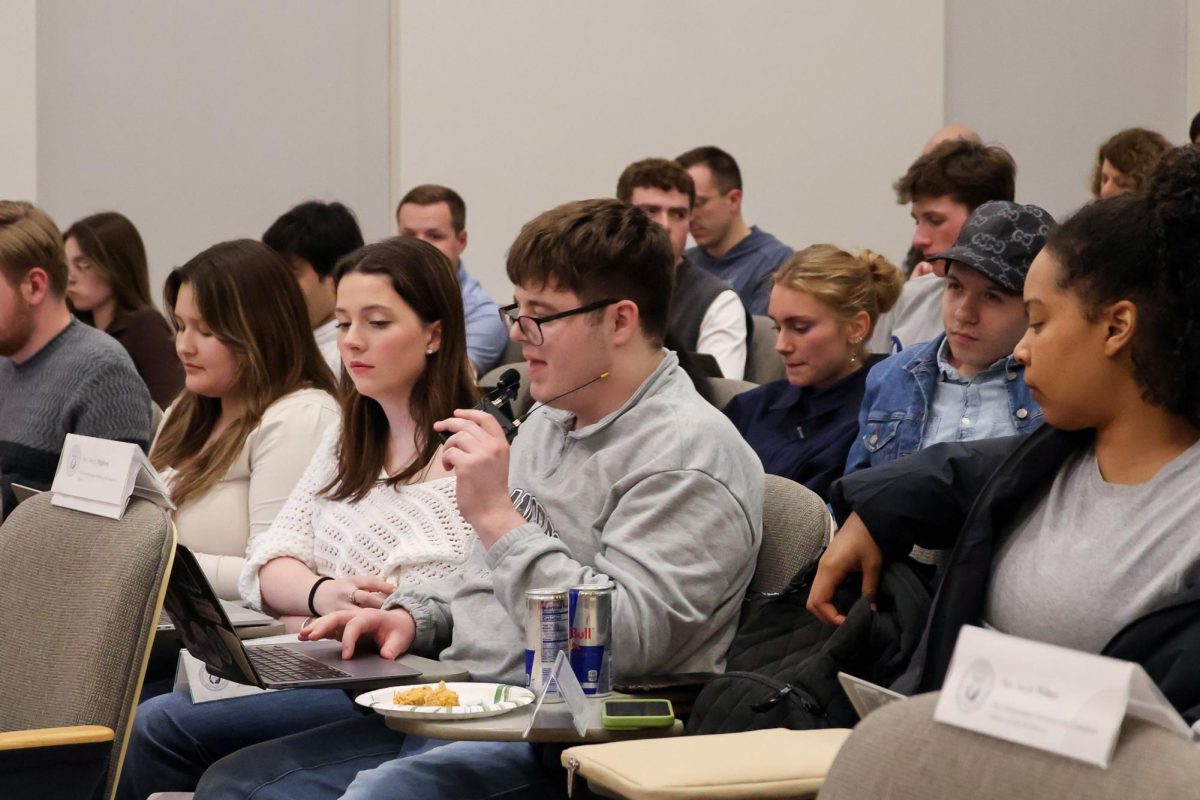Updated: Dec. 11, 2021 at 12:48 p.m.
After pausing the probe for a chief digital officer in May, Chief Financial Officer Mark Diaz said they will resume the search “in the near future,” hoping to fill the role by the end of the fiscal year.
GW has operated without a permanent information technology leader since former Chief Information Officer Loretta Early stepped down last September as officials laid off several IT staff and restructured the department to a centralized shared services model. Jared Johnson, the interim chief technology officer who took over last fall after Jonathan Fozard’s two month stint, has led a department that faculty said has been understaffed and overwhelmed with IT support requests.
Officials laid off dozens of technology staff last year to mitigate the financial impact of the pandemic and asked them to reapply for a smaller number of positions under the new structure.
Diaz, who is overseeing the search, said officials hope to fill the position before the end of the fiscal year – which concludes June 30.
“The market for technology and digital talent is not immune to the same forces that are impacting several other areas of the labor market,” he said in an email. “While the evolving market presents challenges, it simply requires GW to heighten our efforts to find the best qualified candidate.”
University spokesperson Crystal Nosal said officials are committed to finding the best chief digital officer for GW.
“As we have shared previously, GW created a new position of Chief Digital Officer (CDO) which will take the place of the traditional Chief Information Officer role,” she said in an email. “The CDO will lead the University’s digital transformation, leveraging technology as a strategic driver in support of our academic mission.”
Nosal said last August that officials were reassessing their objectives in the “technology space” when Early stepped down last September, adding that they planned to conduct a search “in the future.”
“The move to a strategically focused CDO position will replace the need for the CIO position,” she said in an email late last August.
Johnson, the interim chief technology officer, has worked at GW for 17 years and said he plans to stay in his role in the near future.
“I have many deep relationships here, many relationships that are family,” he said. “So I enjoy coming to work each day.”
But Johnson’s tenure has coincided with an understaffed department and a surge in IT support requests this semester, and faculty say a shortage of employees left without a permanent leader could negatively impact the support that IT is able to offer to the GW community.
Nosal said last November that officials still planned to create the chief digital officer position when Fozard departed the University.
“The CDO will lead the University’s digital transformation, leveraging technology as a strategic driver in support of our academic mission,” she said in an email.
Eric Grynaviski, the chair of the technology subcommittee of the Faculty Senate’s educational policy and technology committee, delivered a report at last month’s senate meeting stating that the reduction in IT staff and shift to a centralized shared services model for IT have has led to more time being needed to resolve IT issues.
“The subcommittee believes that no organizational model would be sufficient with current staffing levels,” he said. “We simply don’t have enough people answering the phone, and it doesn’t quite matter how you organize them.”
Grynaviski said under the shared services model, all IT staff report to the chief financial officer, compared to the previous model in which some staff reported to the Office of the President and others reported to the Office of the Provost.
He said though the committee has not taken a stance on which model is more effective, faculty have “strong opinions” about the strengths and weaknesses of each model.
Grynaviski said certain aspects of IT services under the chief financial officer’s supervision would better succeed if handled by the provost’s office, including the management of the Banner system that faculty often use.
IT staff received more than double the amount of support requests in the first week of the semester compared to previous in-person fall semesters. Grynaviski’s presentation states that 73 percent of IT support requests were answered in September and almost 75 percent were answered in October.
Harald Griesshammer, an associate professor of physics and a member of the senate’s education policy and technology committee, said at last month’s senate meeting that the previous model was more efficient because academic technologies reported to the provost, who was more aware of faculty issues than Diaz, the chief financial officer.
“For me, it doesn’t make sense that the academic side of IT is reporting to this chief financial officer who frankly has no idea about academic needs and is most likely to prioritize budgetary issues over educational or research issues,” he said.
Griesshammer said he’s concerned about GW’s ability to retain IT staff like Johnson given that other organizations in the D.C. area may have jobs with better salaries and fewer hours.
“We can only hang in, and we can just hope that Jared is not going to call it quits,” he said.
Joe Cordes, a professor of economics and public policy and public administration and faculty senator, said at institutions of higher education, searches for positions like a chief digital officer are sometimes unsuccessful on their first attempt to fill the role, especially since they are a “hot commodity” in the job market.
“I’m quite certain they’re going to find somebody, but sometimes it takes more than one try,” he said.
Cordes said incoming interim University President Mark Wrighton will likely decide whether filling the position will be a priority during his time in the position.
“He might say that, ‘Absolutely this is a top priority, and we’ve got to move it along yesterday,’ in which case it will happen very quickly,” Cordes said. “I just don’t know.”








